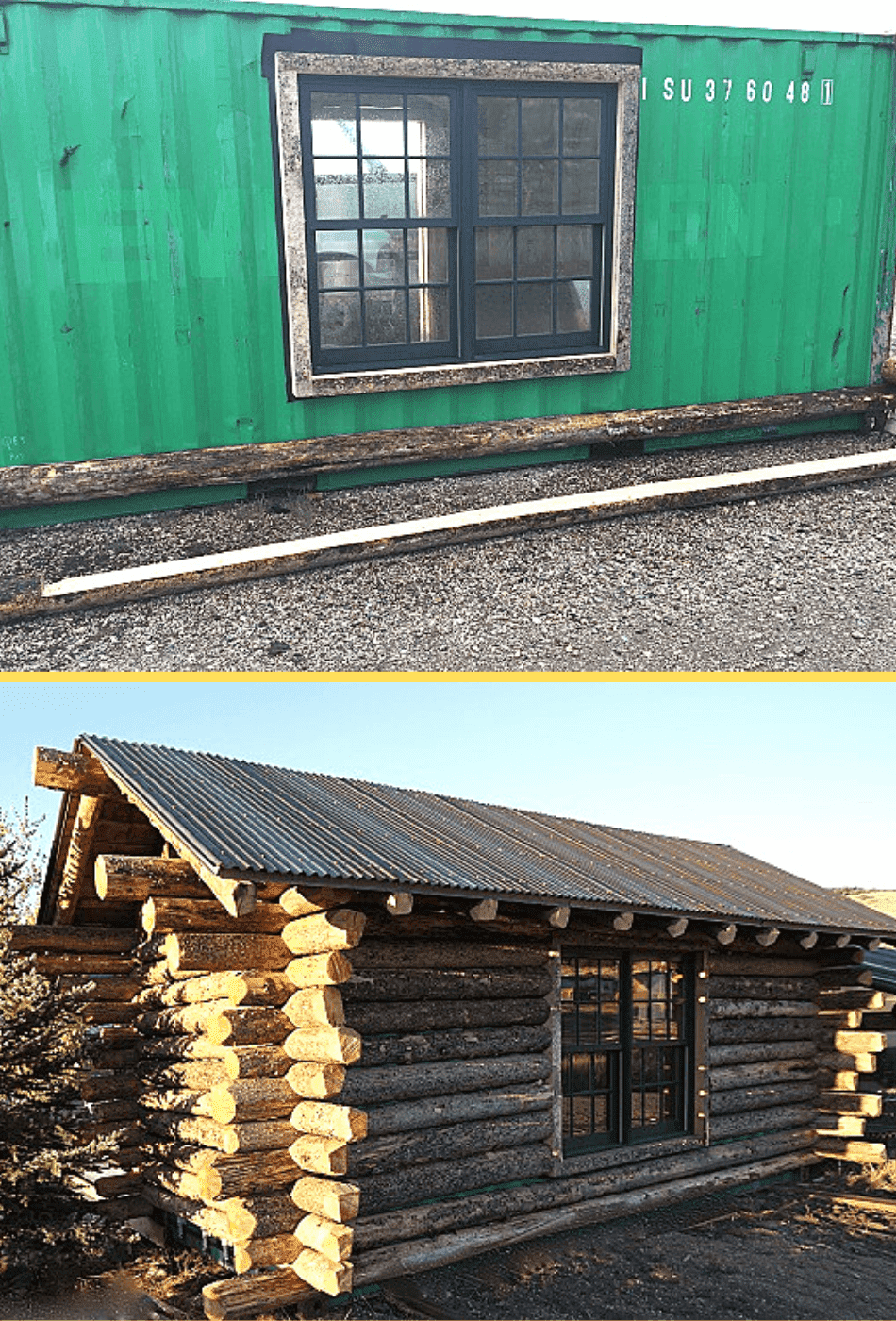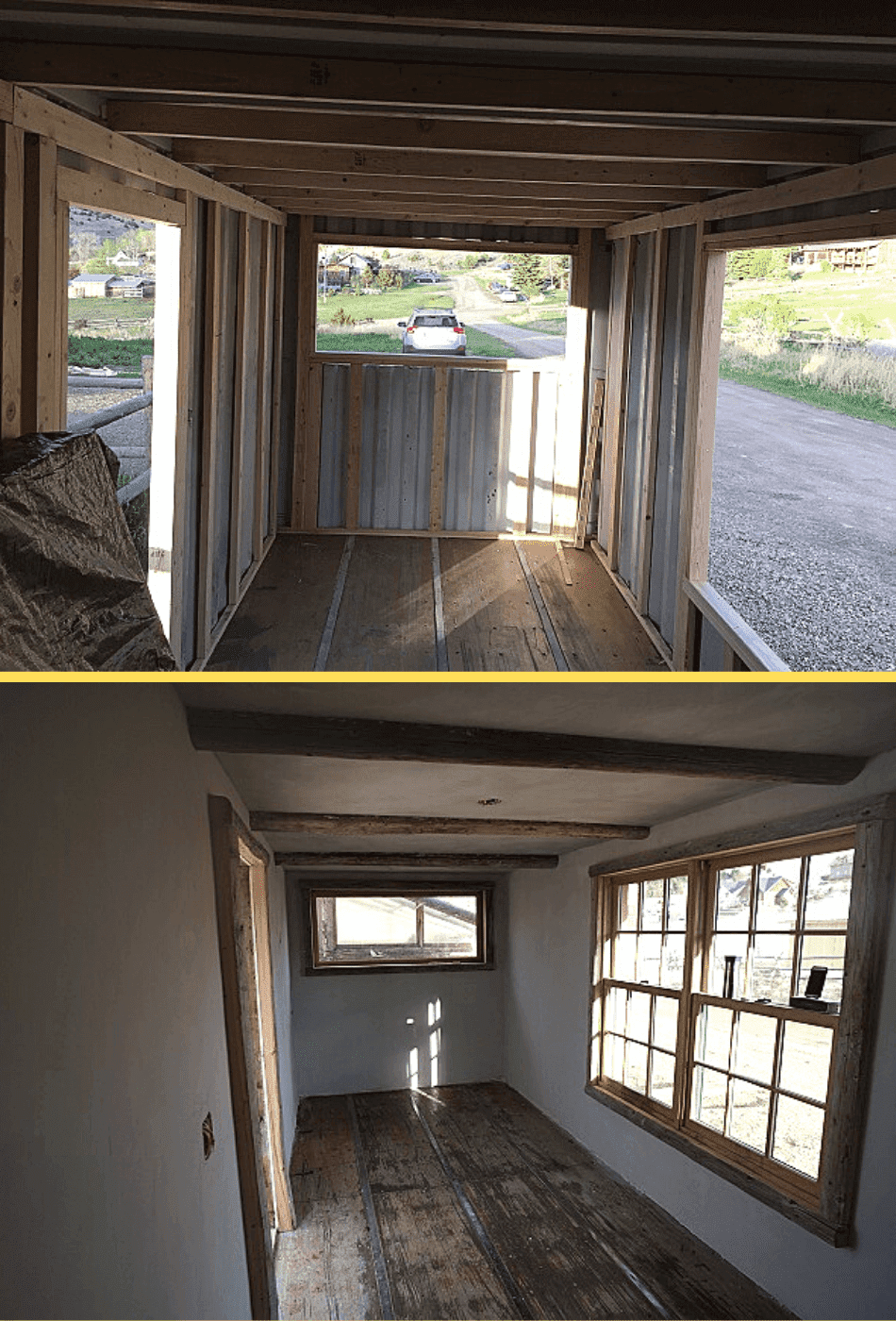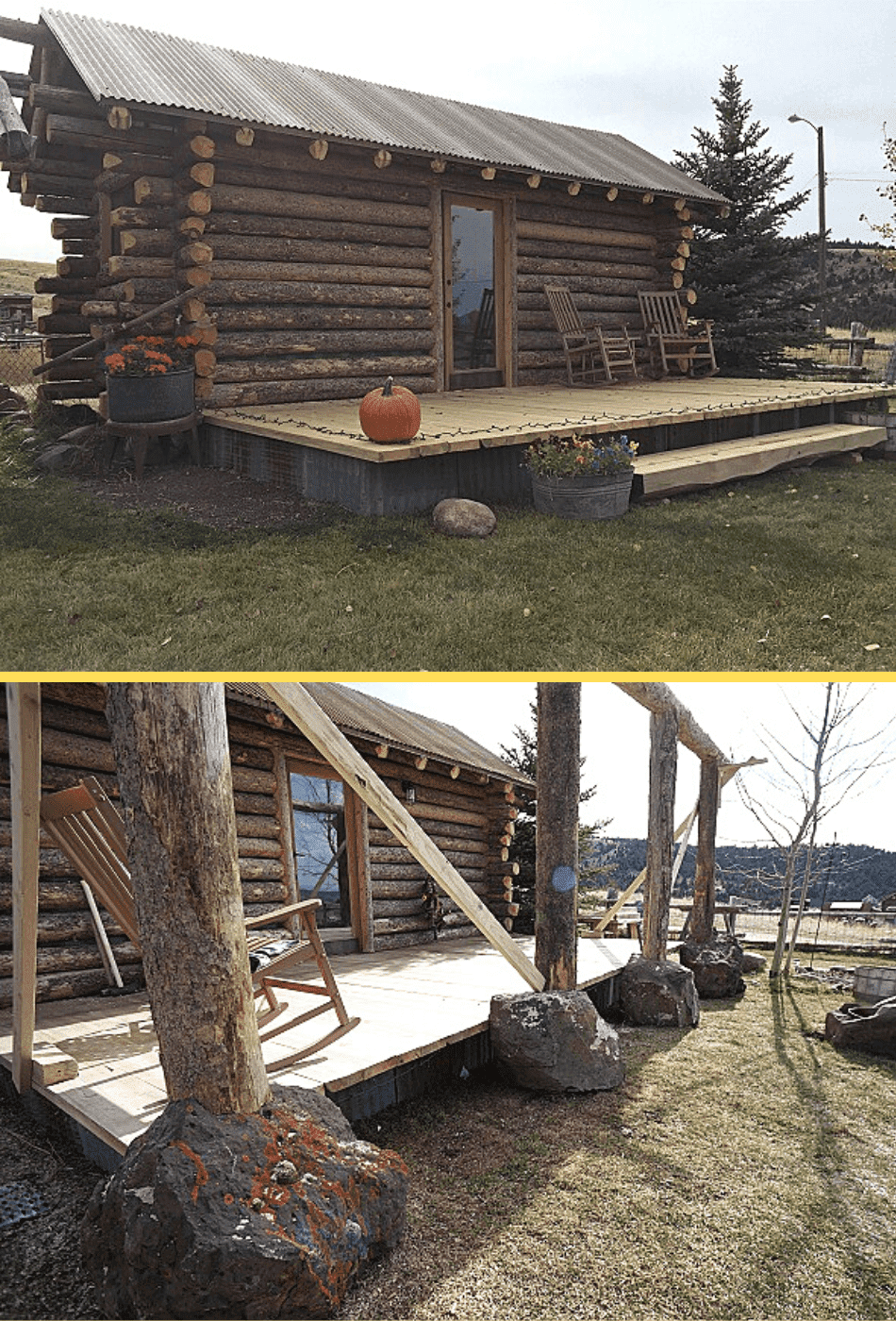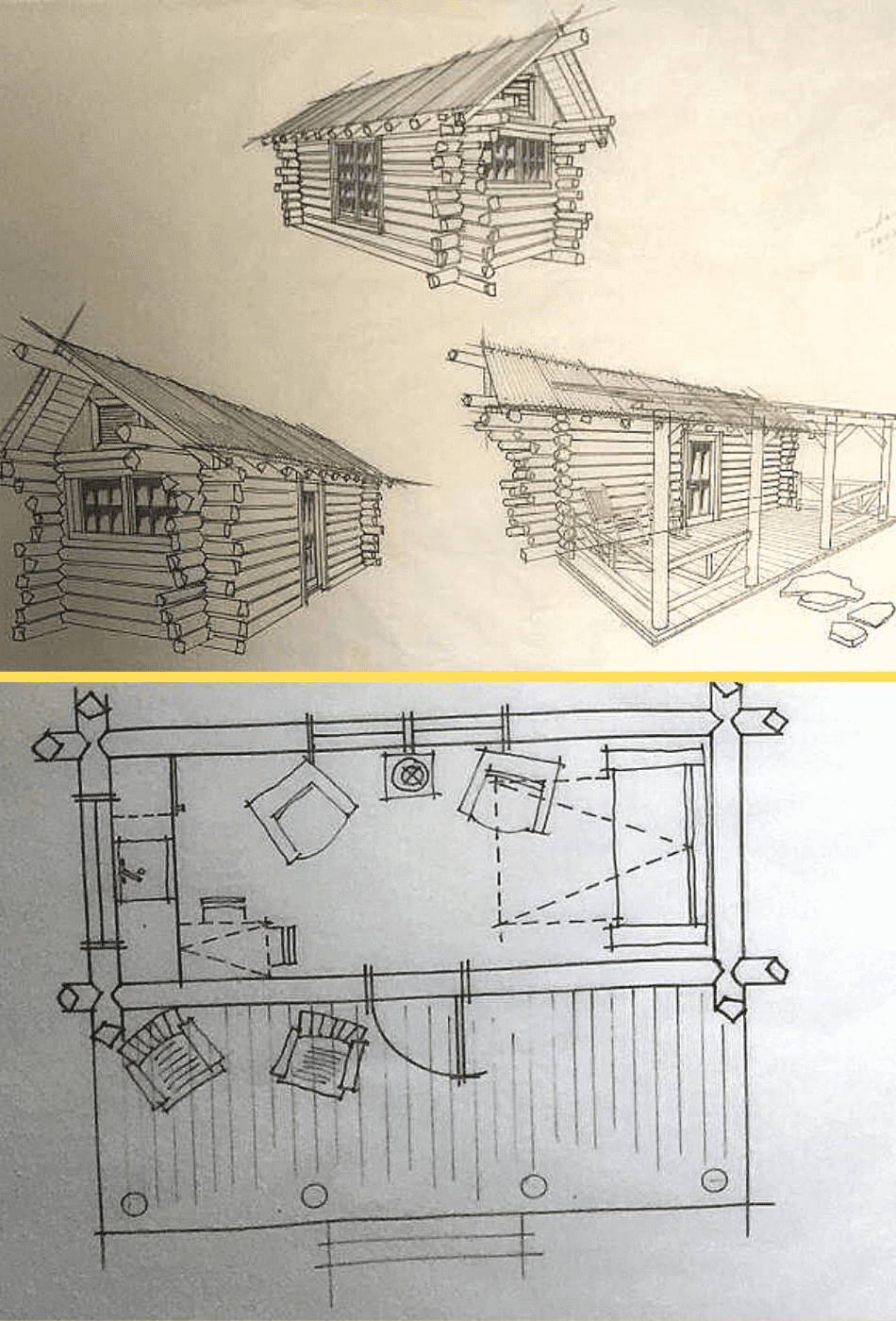In the realm of innovative housing, Brian Morris, a creative mind at Yellowstone Timber Fusion, has pioneered a striking blend of architecture by constructing what’s presumed to be the world’s first amalgamation of a shipping container and a log cabin, a true hybrid home.
This avant-garde structure represents a milestone in the sphere of custom dwelling spaces, merging the sturdy, industrial essence of a container home with the natural, comforting aura of a log cabin.
Harnessing the unique qualities of both design paradigms, this living area is a testament to the seamless integration of rustic log cabin warmth with sleek, modern accents.
The project introduces the possibility for sustainable and eco-friendly living spaces without compromising on style or comfort. It shifts the perception of housing towards a more versatile and environmentally considerate approach, proving that the intersection of different architectural styles can birth truly unique habitats.
Inspiration Behind Container Homes
The idea sparked for an innovative constructor during a vibrant weekend retreat with his partner. They stayed at a lodge by the Yellowstone River, nestled in an eye-catching yellow shipping container.
Surrounded by a handful of these striking metal homes, he found himself imagining the possibilities. His expertise in crafting log homes could bring a unique edge to these steel structures. Excited by this vision, he set out to blend his skill with these robust containers and pioneer a new living concept rooted in container living.
- Location of Inspiration: Pine Creek Lodge, Montana
- Initial Encounter: Bright-colored shipping container
- Idea Generation: Fusion of log home craftsmanship with container durability

Image Courtesy of Discover Containers
Motivations Behind Choosing Shipping Containers for Home Construction
Individuals opt for shipping containers as building materials for several compelling reasons. They offer a plethora of design possibilities, enabling one to craft a unique and innovative dwelling. Shipping containers are celebrated for their structural robustness, serving as unparalleled building blocks for a range of structures, from expansive industrial facilities to cozy residential homes.
The choice to use recycled shipping containers in construction is also driven by their sustainability. These containers can be transformed into habitable spaces with distinct configurations and finishes, setting them apart from conventional building materials. This choice reflects a commitment to both creativity and environmental responsibility.

Image Courtesy of Discover Containers
Insulation Techniques for Shipping Containers
To maintain a stable temperature inside the container, one applies urethane spray foam insulation, which boasts an excellent thermal resistance or R-value. The application fuses the foam to the surfaces of the container, effectively becoming an integral part of the corrugated steel. This method ensures minimal heat gain or loss, crucial for container home comfort.
- Product Used: Urethane spray foam
- Surface Compatibility: Corrugated metal
- Benefits: Optimal thermal resistance, seamless integration with container walls.
Home Building Adventures: Crafting Spaces
In their journey of constructing a home, they reveled in the thrill of selecting a conex box for the project’s foundation, which promised both durability and a touchstone to history. The vision of their home blossomed with the container’s vivid evergreen hue against Montana’s storied backdrop.
- Foundation: Chose a robust 8 x 20 conex box
- Design: Integrated unique container aesthetics
- Customization: Tailored to personal taste and history
- Delivery: Watched the container arrive, marking a tangible start
Their anticipation peaked as they envisioned the customization opportunities, from crafting the floor plan with an architect to selecting windows that frame the vistas and flooring that echoes their style. Each selection, down to the plumbing details, imbued their home with a sense of excitement and bespoke charm.

Image Courtesy of Discover Containers
Container Home Construction Expense Summary
Intriguingly, the total build cost for a modern 20-foot container home with an expansive deck and protective porch roof stands at $16,900. The key expenditures include:
- Container Purchase: $3,200
- Doors & Windows: An affordable $500
- Structural Framing: $1,500
- Secure Fasteners: Just $500
- Interior Walls: Drywall materials totaling $350
- Sleek Plaster Finish: $250
- Electrical Wiring: Essential for $800
- Plumbing Essentials: Priced at $400
- Kitchen Cabinets: $1,300
- Countertop Installation: A modest $200
- Sink & Faucet: $300
- High-Quality Insulation: Corbond method for $1,300
- Weather-Resistant Roofing: Including porch for $2,600
- Durable Chinking: Only $200
- Timber Framework: $2,500 for log work
- Additional Materials: Covering miscellaneous needs, $1,000
These costs meticulously detail a blend of durability and aesthetics through chosen materials, ensuring this unique abode is not just a sight to behold but structurally sound.
Benefits of Constructing With Shipping Containers
When one considers the sustainability and durability of container homes, the merits become clear. The adaptability in design is remarkable; individuals across the world are realizing inventive and minimalist living solutions using these robust steel units. Container homes can be seen everywhere, embodying innovation with a minimal environmental footprint.
Durability is another significant benefit. Steel shipping containers surpass traditional wood frames in sturdiness, allowing for a design that often reduces dependency on concrete—a factor that not only cuts down on hidden costs but also benefits the environment.
For those passionate about environmental conservation, container homes stand out as a symbol of ecological responsibility. They exemplify the concepts of recycling and repurposing—transforming secure steel structures into unique, eco-friendly dwellings that continue to narrate their maritime histories within new contexts.
- Design Flexibility: Unmatched adaptability in crafting unique living spaces.
- Strength: Superior steel framework offers increased resilience.
- Eco-Friendly: Exemplifies recycling, reducing the demand for new materials.
These homes are more than just a place to live; they are a testament to human ingenuity and a nod to sustainable development.
Shipping Container Construction: Pros & Cons
- Affordability: They typically offer a more budget-friendly alternative to traditional building materials.
- Sustainability: Utilizing these units can repurpose otherwise unused steel.
- Speed: Assembles more quickly than conventional structures.
- Durability: Designed for harsh maritime conditions, containers can withstand extreme weather.
However, potential drawbacks include:
- Temperature Regulation: Metal conducts heat, so insulation is vital.
- Building Codes: Some areas have strict regulations that might not accommodate container structures.
- Modification Costs: Cutting and welding to customize can add up.
- Space Limitations: Standard sizes can restrict design options.
Community Reactions to the Hybrid Home
- Innovative Ideas: Admirers are excited about blending the rustic appeal of log cabins with the modern edge of shipping containers. One enthusiast considers this fusion as a canvas for creativity, offering customizable luxury cabins for a fraction of the cost, including the intriguing prospect of container-based water features.
- Encouragement and Praise: Supportive messages are flowing in, with well-wishers commending the ingenuity of such a project. The unique design is likened to a work of art and Brian is hailed as a visionary for his out-of-the-box thinking.
- DIY Spirit: Inquisitive minds have asked whether Brian took on this transformation himself to reduce costs. Clarification was given, confirming that Brian indeed handled the conversion, implicating the personal effort invested in creating this hybrid home.
- Expressions of Interest: There is a palpable desire to emulate Brian’s approach, with individuals expressing a keen interest to reach out and potentially own a similar structure. The innovation showcased has sparked a sense of aspiration among the audience.
Utilizing Brian’s approach could lead to more people enjoying their hybrid container-log cabin homes, reflecting the intrigue and enthusiasm this concept has generated.
Source : Discover Containers

